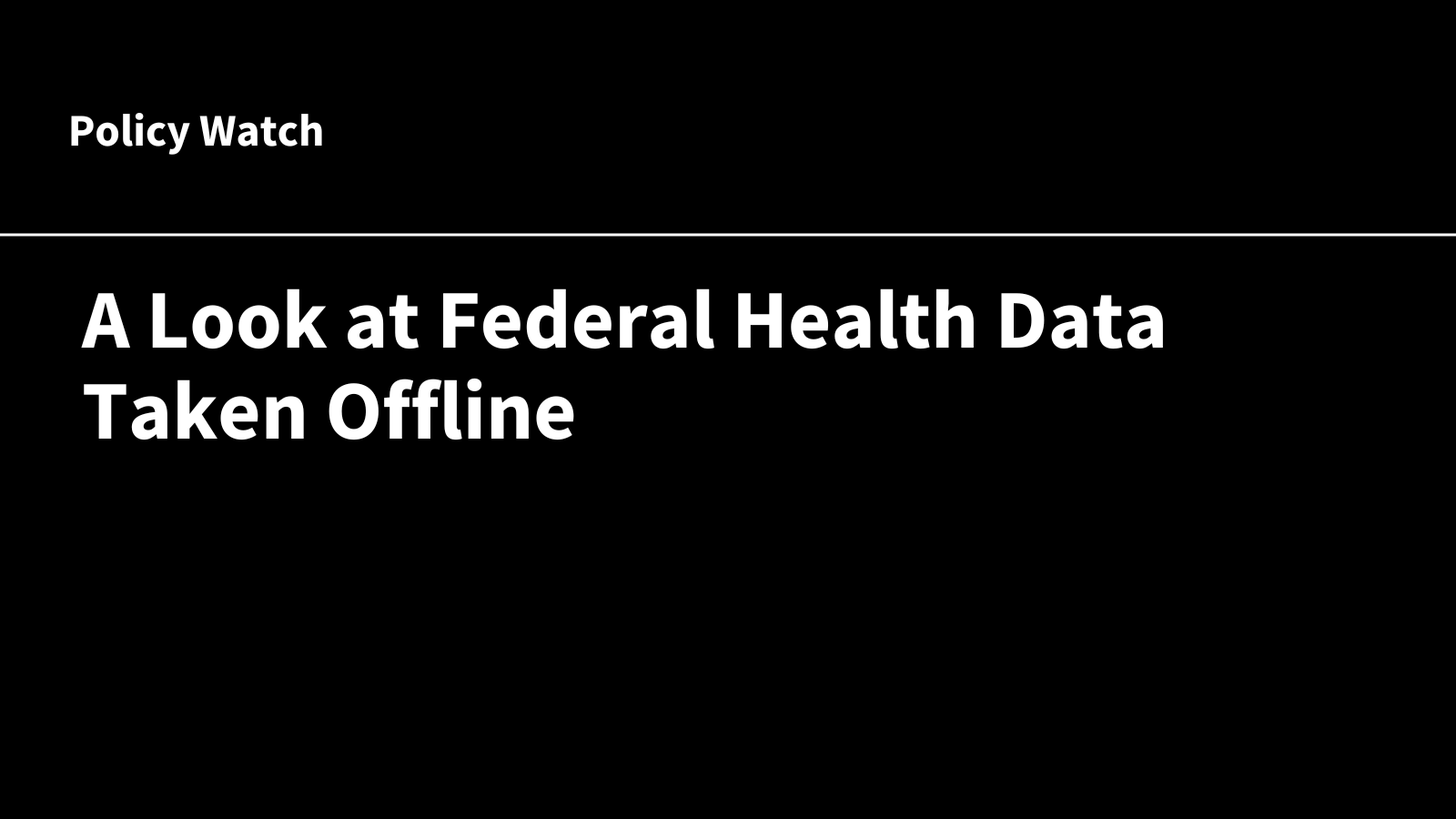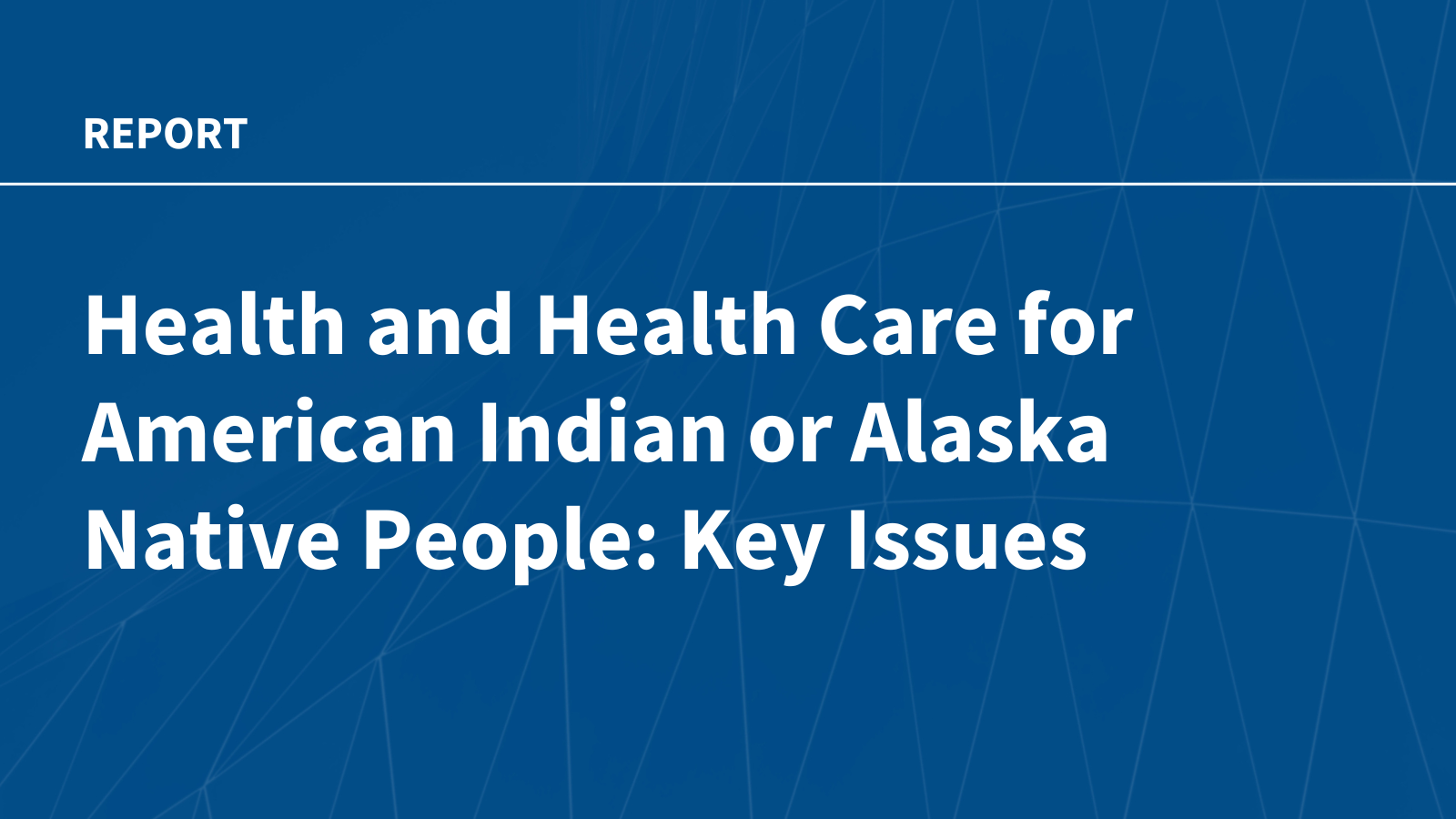On Friday January 31, 2025, several federal government datasets went offline. The datasets taken down included some widely used, large-scale national health surveys, indices, and data dashboards that inform research, policy making, and media coverage about health care and public health. For example, several Centers for Disease Control and Prevention (CDC) surveys and datasets were offline Friday and Saturday, with messages simply saying the page “was not found.” The homepage of the United States Census displayed an error message, but data.census.gov – where many datasets can be downloaded – was functioning.
By Sunday February 2, 2025, some of the landing pages started to come back online – now with a warning message: “CDC’s website is being modified to comply with President Trump’s Executive Orders,” suggesting there could be future changes. In some cases, survey data files are back online and appear to be intact, but the survey documentation (questionnaires and codebooks), which researchers use to analyze the data files, remained offline. Some related reports also remained offline. It is not yet clear whether all the datasets and their documentation that went offline will come back or remain online, and if they do, what changes, if any, will be made. It also remains to be seen what changes may be made to future data collection efforts.
The removal or modification of these data sources appears to be in response to executive orders issued by President Trump on his first day in office outlining the administration’s perspectives and approach to sex and gender and on racial equity and diversity equity and inclusion (DEI), as well as a pause on foreign assistance. An Office of Personnel Management (OPM) memorandum on the first EO directed departments and agencies to “take down all outward facing media (websites, social media accounts, etc.) that inculcate or promote gender ideology” and “withdraw any final or pending documents, directives, orders, regulations, materials, forms, communications, statements, and plans that inculcate or promote gender ideology.” Another OPM memorandum similarly directed departments and agencies to “Take down all outward facing media (websites, social media accounts, etc.) of DEIA offices”. None of these executive orders nor the OPM memos specifically mention datasets or survey data.
Federal surveys play a key role in the health surveillance system, which helps direct initiatives to address some of the most pressing health conditions and problems facing the country. For example, one of the affected datasets is CDC’s Behavioral Risk Factor Surveillance System (BRFSS), which is one of the most widely used national health surveys and has been ongoing for about 40 years. Datafiles for all years were temporarily offline and as of this writing have been reposted, but without questionnaires or codebooks. BRFSS is described on one federal website as a source of state-level “information about health risk behaviors, preventive health practices, and health care access primarily related to chronic disease and injury.” The survey has been used for decades to inform policymakers, the media, and the public on a wide range of health topics, such as obesity rates, access to breast cancer screenings, vaccination rates, and the share of people with pre-existing conditions. With sampling in every state, BRFSS data are particularly helpful for understanding health issues in low-population states and rural areas.
In reviewing KFF’s archives of the BRFSS core questionnaire, it did not include detailed questions about sexual orientation or gender identity. However, in recent years, BRFSS offered an optional module on sexual orientation and gender identity, which was implemented in most states. This supplemental data has been used by KFF to show that adults who identify as transgender are more likely than cisgender adults to be uninsured, experience depression, and report being in poor health. At the time of this writing, the BRFSS data file is back online and appears to be intact, including the question about gender identity, though the survey documentation is not online.
Another of the datasets taken offline was CDC’s Youth Risk Behavior Survey (YRBS), which, since 1990, has tracked high school students’ behaviors that can influence health and social outcomes, like smoking, drug and alcohol use, and dietary and exercise habits. Like BRFSS, the landing page and associated materials were offline but, as of the time of this writing, have returned without questionnaires or codebooks. This survey is particularly useful because it asks questions to teenagers directly, rather than surveying their parents, who may be unable or unwilling to answer questions accurately. KFF analysis of YRBS data has shown that large shares of teenagers experience persistent sadness and hopelessness, and that teenage girls experienced a sharp rise in suicidal ideation during the pandemic. Recently, the YRBS has asked respondents about their sexual orientation and gender identity, and the data has been used to highlight substantial mental health disparities among LGBTQ+ high school students, compared to their non-LGBTQ+ peers.
Several of the other datasets taken down (at least temporarily) relate to HIV/AIDS in the U.S. as well as global health efforts around the world in low and middle-income countries, including but not limited to:
- CDC AtlasPlus: an interactive database with about 15 years of surveillance data for HIV, viral hepatitis, STD, and TB, as well as data on the social determinants of health. (Data pertaining to the Ryan White HIV/AIDS Program also remain offline as of this writing, including reports and databases.)
- PEPFAR Data Dashboards: PEPFAR, the U.S. global HIV/AIDS Program’s comprehensive, up-to-date online data portal of program budgets and expenditures by country and service category, among other variables.
- Demographic and Health Surveys (DHS) databases: an ongoing set of nationally representative household surveys with population, health, HIV, and nutrition data from more than 90 countries, data downloads.
- Foreignassitance.gov: The U.S. government’s website with all foreign assistance data by country, budget, expenditure, program, going back more than two decades and created to increase aid transparency (this website is now back online).
Other federal dashboards and indices were also offline, at least temporarily, including but not limited to: Area Health Resource Files (a resource of data on health professionals, hospitals, and economic indicators), CDC’s Social Vulnerability Index (Census-based socioeconomic data used for disaster planning, response and recovery), and the Environmental Justice Index (Census tract-level data used to identify populations facing negative environmental, social and health factors).
While not the focus of this brief, other health information intended for the public has also been removed or changed, which could have implications for access to and receipt of services and other interventions.
Publisher: Source link










